- Home
- Technical Cooperation Projects
- Index of Countries
- Latin America
- Panama
- Project for Participatory Community Development and Integrated Management of the Alhajuela Lake Subwatershed
- Project News
- Environment-Friendly Farming Techniques (Part I)
Project News
2008-11-28
Environment-Friendly Farming Techniques (Part I)
What are environment-friendly farming techniques? Today, I will introduce some of these techniques.
The first group of these could be soil conservation techniques. When a farmer wants to grow crops on sloped terrain, she makes small terraces or she plants on a contour line to reduce erosion as much as possible (photos 1 & 2). In photo 3, an "A level" (a level in the shape of the letter "A".) is being used for contour planting. Bamboo and fallen tree trunks can be used to make barriers or live plants can be planted to impede the erosion of the soil (photo 4).
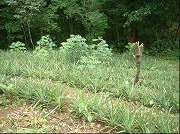
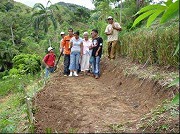
(Photo 1: left) Commemorative photo of a terrace made by group work. (October 23, 2008)
(Photo 2: right) Pineapple and cassava are planted in contour lines. (July 11, 2008)
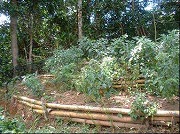
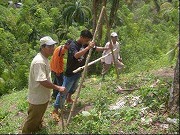
(Photo 3: left) Practicing how to make and use the "A level" (used for contour planting). (October 23, 2008)
(Photo 4: right) Bamboo is used as a soil barrier in this terrace with chili peppers. (October 14, 2008)
A second group of environment-friendly techniques would be agroforestry techniques. Besides crops that grow on trees (such as coffee, cacao and annatto), these techniques include planting annual crops or tuberous plants between rows of leguminous trees (photos 5 & 6).
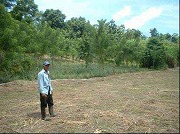
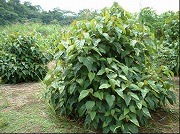
(Photo 5: left) The annatto seed produces a natural, red food coloring. (July 14, 2007)
(Photo 6: right) In the background, you can see pineapples planted between the rows of leguminous trees. (October 17, 2008).
A third group of techniques that could be mentioned are those for making organic fertilizer and natural insect repellents. The use of bocashi and earthworm fertilizer is also expanding in Panama (photos 7 & 8). We also introduce the planting of leguminous trees and bushes as "green manure". Plant pests and diseases are also a big problem for farmers in the Project area. However, we try to avoid the use of agrochemicals and as an alternative use chili pepper extract as a natural repellent.
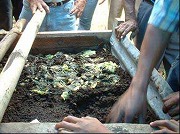
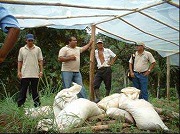
(Photo 7: left) Bocashi is stored in a dry place out of the rain. (August 4, 2007)
(Photo 8: right) The earthworms are raised on pig manure and vegetable scraps. (July 17, 2007)
There are other jobs that need to be done to support the activities on the group farms, such as building a shed for storing the farming tools and fences to protect crops from animals; also cleaning and maintaining the water source and water pipes.
(Mr. Taku MORI, Farmland Use Plan / Environmental Education)
